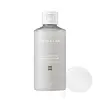What's inside
What's inside
 Key Ingredients
Key Ingredients

 Benefits
Benefits

 Concerns
Concerns

No concerns
 Ingredients Side-by-side
Ingredients Side-by-side

Melissa Officinalis Leaf Extract 50%
Skin ConditioningWater
Skin ConditioningButylene Glycol
HumectantGlycerin
Humectant1,2-Hexanediol
Skin ConditioningMethyl Gluceth-20
HumectantGlycereth-26
HumectantEthylhexylglycerin
Skin ConditioningAmmonium Acryloyldimethyltaurate/Vp Copolymer
Sodium Citrate
BufferingCitric Acid
BufferingTrisodium EDTA
Gluconolactone
Skin ConditioningSodium Hyaluronate Crosspolymer
HumectantHydrolyzed Hyaluronic Acid
HumectantSodium Hyaluronate
HumectantRosmarinic Acid
AntioxidantHyaluronic Acid
HumectantMelissa Officinalis Leaf Extract 50%, Water, Butylene Glycol, Glycerin, 1,2-Hexanediol, Methyl Gluceth-20, Glycereth-26, Ethylhexylglycerin, Ammonium Acryloyldimethyltaurate/Vp Copolymer, Sodium Citrate, Citric Acid, Trisodium EDTA, Gluconolactone, Sodium Hyaluronate Crosspolymer, Hydrolyzed Hyaluronic Acid, Sodium Hyaluronate, Rosmarinic Acid, Hyaluronic Acid
Water
Skin ConditioningButylene Glycol
HumectantGlycerin
Humectant1,2-Hexanediol
Skin ConditioningNiacinamide
SmoothingHydroxyethyl Urea
HumectantMaltodextrin
AbsorbentArginine
MaskingGlutathione
C12-14 Alketh-12
EmulsifyingDiospyros Kaki Fruit Extract
Skin ConditioningAcrylates/C10-30 Alkyl Acrylate Crosspolymer
Emulsion StabilisingCetyl Ethylhexanoate
EmollientEthylhexyl Palmitate
EmollientHydrogenated Polydecene
EmollientMacadamia Ternifolia Seed Oil
EmollientSqualane
EmollientJuniperus Mexicana Oil
MaskingPolyglyceryl-2 Stearate
EmulsifyingAdenosine
Skin ConditioningPolyglyceryl-10 Laurate
Skin ConditioningPhytosteryl/Behenyl/Octyldodecyl Lauroyl Glutamate
Skin ConditioningCholesterol
EmollientBrassica Campestris Sterols
EmollientGlyceryl Stearate
EmollientCarbomer
Emulsion StabilisingAbies Sibirica Oil
MaskingElettaria Cardamomum Seed Oil
MaskingVetiveria Zizanoides Root Oil
MaskingStearyl Alcohol
EmollientHydrogenated Lecithin
EmulsifyingPvm/Ma Copolymer
Emulsion StabilisingVinyldimethicone
Dipropylene Glycol
HumectantHydroxyacetophenone
AntioxidantSodium Hyaluronate
HumectantPolyglutamic Acid
Skin ConditioningHydroxyethylcellulose
Emulsion StabilisingCeramide NP
Skin ConditioningStearic Acid
CleansingTocopherol
AntioxidantOleic Acid
EmollientDisodium EDTA
Caprylyl Glycol
EmollientEthylhexylglycerin
Skin ConditioningAscorbic Acid
AntioxidantRetinyl Palmitate
Skin ConditioningRiboflavin
Cosmetic ColorantPantothenic Acid
Skin ConditioningNiacin
SmoothingFolic Acid
Skin ConditioningThiamine Hcl
MaskingCarnitine Hcl
HumectantBiotin
AntiseborrhoeicPhosphatidylcholine
EmulsifyingManganese Sulfate
Skin ConditioningMagnesium Sulfate
Water, Butylene Glycol, Glycerin, 1,2-Hexanediol, Niacinamide, Hydroxyethyl Urea, Maltodextrin, Arginine, Glutathione, C12-14 Alketh-12, Diospyros Kaki Fruit Extract, Acrylates/C10-30 Alkyl Acrylate Crosspolymer, Cetyl Ethylhexanoate, Ethylhexyl Palmitate, Hydrogenated Polydecene, Macadamia Ternifolia Seed Oil, Squalane, Juniperus Mexicana Oil, Polyglyceryl-2 Stearate, Adenosine, Polyglyceryl-10 Laurate, Phytosteryl/Behenyl/Octyldodecyl Lauroyl Glutamate, Cholesterol, Brassica Campestris Sterols, Glyceryl Stearate, Carbomer, Abies Sibirica Oil, Elettaria Cardamomum Seed Oil, Vetiveria Zizanoides Root Oil, Stearyl Alcohol, Hydrogenated Lecithin, Pvm/Ma Copolymer, Vinyldimethicone, Dipropylene Glycol, Hydroxyacetophenone, Sodium Hyaluronate, Polyglutamic Acid, Hydroxyethylcellulose, Ceramide NP, Stearic Acid, Tocopherol, Oleic Acid, Disodium EDTA, Caprylyl Glycol, Ethylhexylglycerin, Ascorbic Acid, Retinyl Palmitate, Riboflavin, Pantothenic Acid, Niacin, Folic Acid, Thiamine Hcl, Carnitine Hcl, Biotin, Phosphatidylcholine, Manganese Sulfate, Magnesium Sulfate
Ingredients Explained
These ingredients are found in both products.
Ingredients higher up in an ingredient list are typically present in a larger amount.
1,2-Hexanediol is a synthetic liquid and another multi-functional powerhouse.
It is a:
- Humectant, drawing moisture into the skin
- Emollient, helping to soften skin
- Solvent, dispersing and stabilizing formulas
- Preservative booster, enhancing the antimicrobial activity of other preservatives
Butylene Glycol (or BG) is used within cosmetic products for a few different reasons:
Overall, Butylene Glycol is a safe and well-rounded ingredient that works well with other ingredients.
Though this ingredient works well with most skin types, some people with sensitive skin may experience a reaction such as allergic rashes, closed comedones, or itchiness.
Learn more about Butylene GlycolEthylhexylglycerin (we can't pronounce this either) is commonly used as a preservative and skin softener. It is derived from glyceryl.
You might see Ethylhexylglycerin often paired with other preservatives such as phenoxyethanol. Ethylhexylglycerin has been found to increase the effectiveness of these other preservatives.
Glycerin is already naturally found in your skin. It helps moisturize and protect your skin.
A study from 2016 found glycerin to be more effective as a humectant than AHAs and hyaluronic acid.
As a humectant, it helps the skin stay hydrated by pulling moisture to your skin. The low molecular weight of glycerin allows it to pull moisture into the deeper layers of your skin.
Hydrated skin improves your skin barrier; Your skin barrier helps protect against irritants and bacteria.
Glycerin has also been found to have antimicrobial and antiviral properties. Due to these properties, glycerin is often used in wound and burn treatments.
In cosmetics, glycerin is usually derived from plants such as soybean or palm. However, it can also be sourced from animals, such as tallow or animal fat.
This ingredient is organic, colorless, odorless, and non-toxic.
Glycerin is the name for this ingredient in American English. British English uses Glycerol/Glycerine.
Learn more about GlycerinSodium Hyaluronate is hyaluronic acid's salt form. It is commonly derived from the sodium salt of hyaluronic acid.
Like hyaluronic acid, it is great at holding water and acts as a humectant. This makes it a great skin hydrating ingredient.
Sodium Hyaluronate is naturally occurring in our bodies and is mostly found in eye fluid and joints.
These are some other common types of Hyaluronic Acid:
Learn more about Sodium HyaluronateWater. It's the most common cosmetic ingredient of all. You'll usually see it at the top of ingredient lists, meaning that it makes up the largest part of the product.
So why is it so popular? Water most often acts as a solvent - this means that it helps dissolve other ingredients into the formulation.
You'll also recognize water as that liquid we all need to stay alive. If you see this, drink a glass of water. Stay hydrated!
Learn more about Water